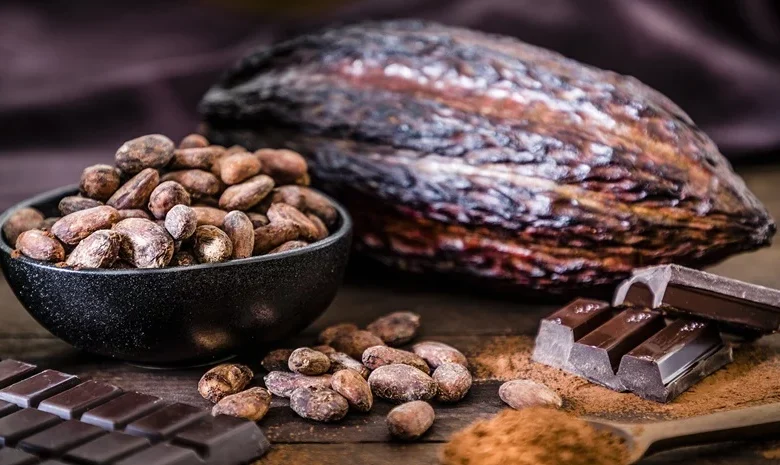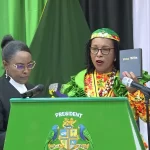Cocoa/Cacao in Dominica

Cocoa in Dominica is integral to the island’s agricultural sector, contributing to local livelihoods and international recognition for its fine-flavored beans. The island’s fertile volcanic soil and favourable climate create ideal conditions for cultivating high-quality cocoa, primarily grown by small-scale farmers nationwide.
The Role of Cocoa in Dominica’s Agriculture
Cocoa cultivation supports hundreds of families in rural areas, with farmers producing beans known for their unique flavour profile. While Dominica contributes a small portion to global cocoa production, its focus on fine-flavored cocoa distinguishes it in niche markets. Key agriculture areas include the northeast and central regions, where cooperatives and private farmers work to enhance production and quality.
Key Initiatives and Support
The Dominica Export Import Agency (DEXIA) plays a vital role in supporting the cocoa industry by providing training and resources to farmers. Collaborative projects like the Cocoa Cluster Development Project have invested over $200,000 to improve harvesting techniques, quality control, and market access. Additionally, the Climate Resilience Execution Agency for Dominica (CREAD) developed financial models to aid farmers in making sustainable investment decisions.
International organizations, including the European Development Fund (EDF), have supported infrastructure upgrades and workshops to improve cocoa quality, enabling Dominica to meet global standards.
Cocoa Plant Characteristics
The cocoa plant (Theobroma cacao) thrives in Dominica’s humid, tropical environment. It is an evergreen tree that can reach heights of up to 8 meters (26 feet). The plant produces large, colorful pods directly on its trunk and branches, a phenomenon known as cauliflory. These pods, which can be yellow, orange, red, or purple, contain 20 to 50 cocoa beans, embedded in a sweet, mucilaginous pulp. The beans are the primary ingredient in chocolate production, while the pulp is sometimes used in beverages and other local delicacies.
Traditional Uses and Cultural Significance
In Dominica, cocoa holds cultural significance beyond its economic value. A traditional beverage, “cocoa tea” is a staple in Dominica households. This rich, spiced drink is made by grating cocoa sticks—hardened rods of pure cocoa—and boiling them with water, milk, and spices such as cinnamon and nutmeg. Cocoa sticks are often handmade, preserving traditional methods passed down through generations. Local artisans and small businesses produce these sticks, contributing to safeguarding Dominica’s culinary heritage.
Local Producers and Artisans
Several local companies and artisans are pivotal in adding value to Dominica’s cocoa industry by producing chocolate-based products that reflect the island’s rich flavours and traditions. Here are some notable producers:
- Pointe Baptiste Estate, Calibishie, DM
A family-owned estate producing a variety of organic chocolates infused with local ingredients like ginger, coffee, and lemongrass, emphasizing traditional methods and sustainable practices. - Choco Dominique, Roseau, DM
Specializes in 100% natural cocoa powder used to make traditional cocoa tea, sourcing beans from local farmers to ensure quality and authenticity. - Awesome Cocoa, Portsmouth, DM
Merges traditional flavours with innovative chocolate-making approaches, committed to maintaining the genuine taste of Dominica cocoa through organic farming practices.
Economic Impact and Export Potential
Dominica’s cocoa is recognized for its delicate flavour quality, which commands higher prices in international markets. Dominica’s cocoa beans sell for approximately USD 2,800 to USD 3,800 per metric ton, compared to other regional origins selling for USD 3,500 to over USD 4,000 per metric ton. This premium pricing reflects the high expectations of quality associated with Dominican cocoa.
The government has initiated projects to revitalize the cocoa industry, including rehabilitating 400 acres of abandoned cocoa fields and establishing 300 acres of new plantings. Training programs have been conducted for over 400 farmers to enhance production techniques and quality management.
Challenges and Sustainability Efforts
Despite its potential, the cocoa industry in Dominica faces challenges such as the need for improved quality management and meeting international standards. Efforts are underway to build quality infrastructure to make the cocoa industry more internationally competitive.
Additionally, global concerns about deforestation and sustainable sourcing have led to new regulations, such as the European Union’s deforestation law, which requires companies to ensure their supply chains do not contribute to deforestation. Major chocolate manufacturers, including Nestlé and Ferrero, have supported this law, emphasizing the importance of sustainable practices in the cocoa industry.
Challenges and Future Prospects
Despite its potential, cocoa production in Dominica faces challenges such as climate change, inconsistent yields, and limited processing facilities. However, ongoing efforts to improve infrastructure, introduce climate-resilient farming practices, and promote value-added products position the sector for growth. Future plans include expanding cultivated acreage, increasing production capacity, and strengthening global market connections.
Dominica’s cocoa industry stands as a testament to the island’s commitment to sustainable agriculture and economic resilience, blending tradition with modern innovation.




